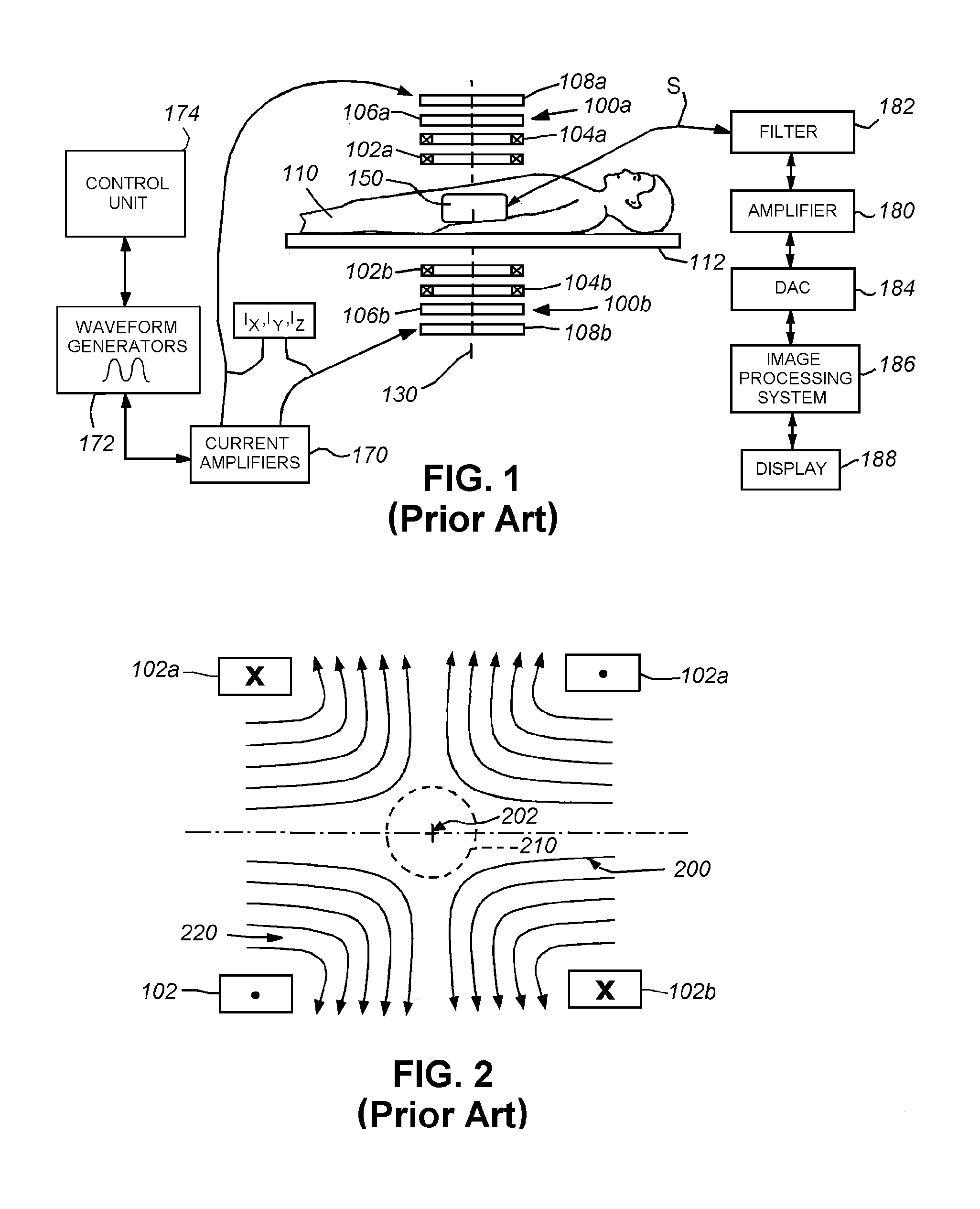System and method for use of nanoparticles in imaging and diagnosis
a nanoparticle and imaging technology, applied in the field of noninvasive imaging of magnetic particles, can solve problems such as impracticality in arrangement, and achieve the effects of improving sensitivity, speeding up or improving the signal-to-noise ratio of imaging, and improving the sensitivity of magnetic particle imaging (mpi)
- Summary
- Abstract
- Description
- Claims
- Application Information
AI Technical Summary
Benefits of technology
Problems solved by technology
Method used
Image
Examples
Embodiment Construction
I. Improved Localization and Imaging
[0053]Reference is made to FIG. 3 which again describes a simplified MPI system 300 like the MPI system described above with reference to FIG. 1. This system 300 is again discussed and illustrated for the purposes of comparison with the following improved system arrangements described below. The views and graphs depicted are generally two-dimensional, but should be taken to describe the resulting field characteristics in three dimensions. The system 300 consists of groups of drive and selection coils 310a and 310b that define therebetween a magnetic field region 320 that can be characterized by the graph 330. The curve 332 defines the magnetic field across the subject produced by the coils to localize the nanoparticle signal versus position within to the region 320 (e.g. distance from either coil 310a, 310b). As described above, the selection and drive coils are operatively connected with a control system 350. The control system includes appropria...
PUM
 Login to View More
Login to View More Abstract
Description
Claims
Application Information
 Login to View More
Login to View More - R&D
- Intellectual Property
- Life Sciences
- Materials
- Tech Scout
- Unparalleled Data Quality
- Higher Quality Content
- 60% Fewer Hallucinations
Browse by: Latest US Patents, China's latest patents, Technical Efficacy Thesaurus, Application Domain, Technology Topic, Popular Technical Reports.
© 2025 PatSnap. All rights reserved.Legal|Privacy policy|Modern Slavery Act Transparency Statement|Sitemap|About US| Contact US: help@patsnap.com



